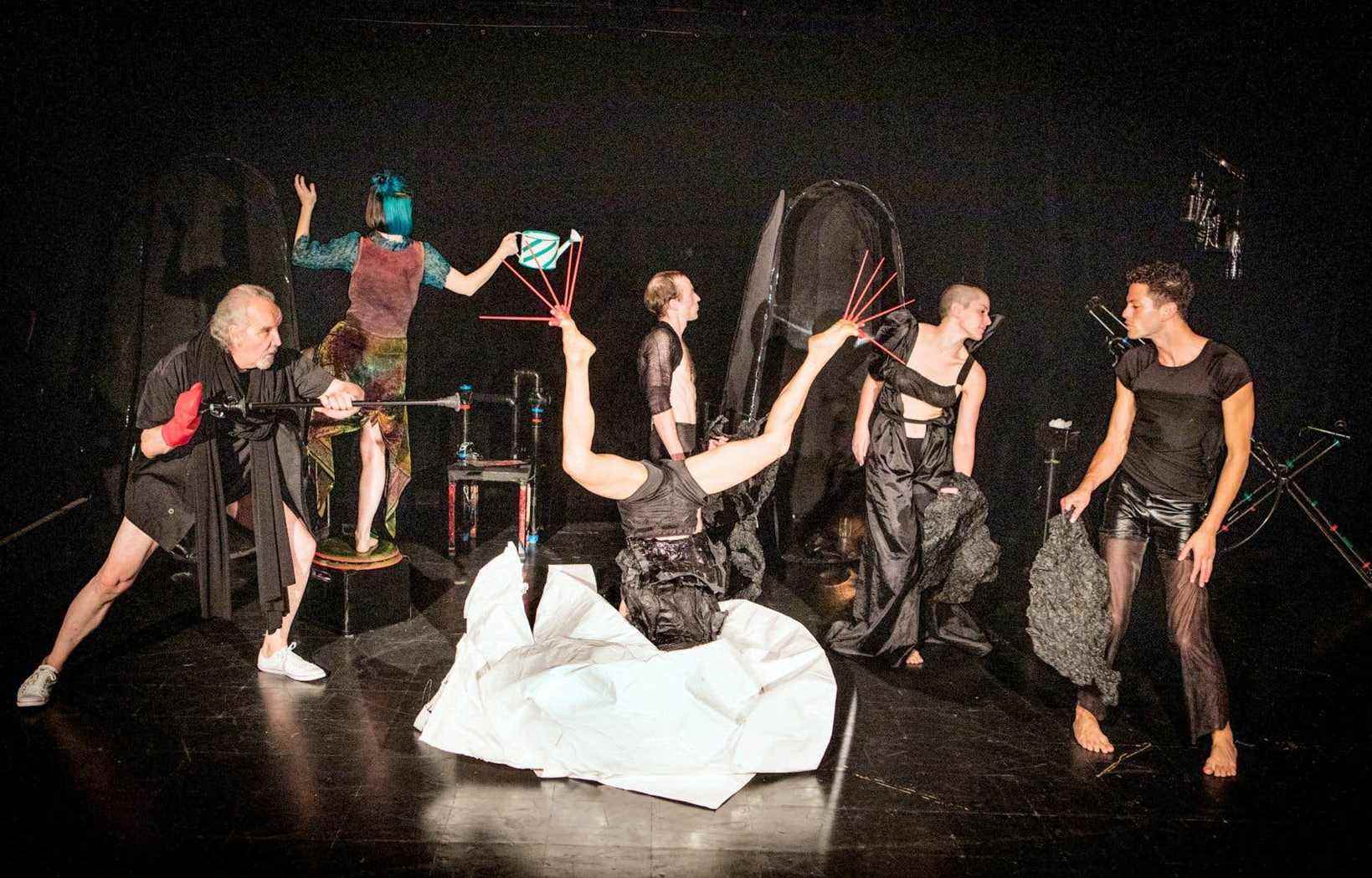Born before COVID-19, Morphs, Lina Cruz’s new show, which is inspired by the dream and the characters that haunt it, experienced a long pandemic sleep before resuming the thread of its creation. Carrying in its wake a raw material in line with its subject.
“It’s been a long time since I wanted to do a play where the main characters are linked to the dream. For me, morphs are the workers of Morpheus, the god of sleep, ”explains the choreographer. In early 2019, the designer began to explore the idea of characters from the dream world with seven dancers and three musicians. But the global crisis has decided otherwise. “It broke everything. I stopped everything until recently, where I took up the piece with only five performers and a musician ”, explains the one who“ very much likes the bodies which intersect and who therefore had to adapt ”to the Covidian realities. .
In Morphs, Lina Cruz wanted to observe the inhabitants of our imagination, those who do not make noise, but who are essential to our life and our creativity. “They are dream weavers, very inventive, playful, mocking and tireless cooks,” she lists. With the show, it’s as if we were looking at the morphs in their daily life, but through a keyhole, when they are not summoned for states of sleep, hallucinatory, psychotic or even [émois] lover. “
To lend them body, the choreographer has drawn and created images, “like a storyboard “. She then made the connection between the images and the movement of her morphs. “I wondered how this or that character should move. I really like the props and the costumes too, they complement the characters, ”she says. On the gestural side, Lina Cruz likes to work with the joints and the detail of the gestures they allow. She thus explores the immense possibilities that the shoulders, wrists, fingers, ankles or even toes can offer.
In this sixth creation at the Agora de la danse, Lina Cruz transports the audience in the skin of characters “designed to measure” for each performer. “I developed according to the particularities of each dancer. If we have to change interpreters, we will have to adapt the character, ”she explains. The five morphs “with human sensitivity, but with an animal attitude” will thus reveal, through nine scenes, the reverse side of the imagination to the public.
They are dream weavers, very inventive, playful, mocking and tireless cooks. With the show, it’s as if we were looking at the morphs in their daily life, but through a keyhole, when they are not summoned for states of sleep, hallucinatory.
A wacky and sonorous universe
Along with the scenography and the choreography, Lina Cruz attaches great importance to the music, which evolves over the course of the piece. “I’ve been working with musicians live on stage for a long time. The exchange and communication between music and dance, there is nothing better. It’s very inspiring for all the performers on stage, ”she says.
Playing live also makes it possible to adapt and follow the evolution of the work. But not only. Indeed, Lina Cruz goes further since she entrusts tasks to the musician Philippe Noireaut. “He interacts with the dancers, but I keep the suspense! »Laughs the designer who received the Dora-Mavor-Moore award in 2012 for her piece Soup of the day and in 2017 for Ylem.
In addition to music, the founder of the company Productions Fila 13 plays with voices, especially through vocals and sound effects. “Initially, I wanted [les personnages] talk. It took me a while to find the sound of the body, let’s say. Ultimately, it creates a real universe, ”she delighted.
To polish the creation of her dreamlike cosmos, Lina Cruz also used songs and extracts from poems also delivered by the musician Philippe Noireaut. We find in particular verses by Victor Hugo, Charles Baudelaire, or even Claude Gauvreau and Robert Desnos. “In my opinion, these are texts that perfectly match the universe of morphs and surrealism. They echo this dreamlike universe, ”she says.
With Morphs, Lina Cruz wishes to celebrate the imagination and “our ability to access it in various ways”, especially these days. “The imagination gives us courage and hope,” she concludes. We really need it right now. “
